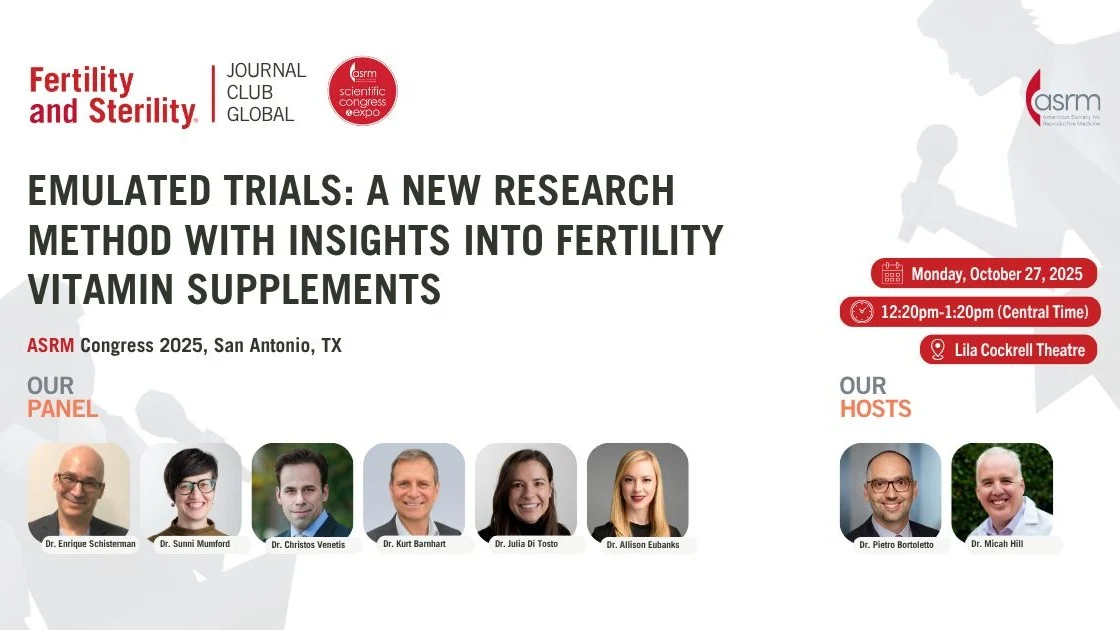
Andreu Quintana i Vehí: How Male Obesity, Often Overlooked in Reproductive Medicine
Andreu Quintana i Vehí, Embryologist at Clínica Eugin, shared a post on LinkedIn about a paper published in Fertility and Sterility:
“Pleased to share our article just published in Fertility and Sterility
We explored how male obesity, often overlooked in reproductive medicine, can profoundly affect early embryo development and clinical outcomes.
This work is part of my ongoing PhD, which aims to understand how different patient-related factors influence morphokinetic development and reproductive outcomes in couples undergoing IVF.
Key findings:
- Embryos from obese males showed significant delays in early cleavage events (t2, t3, t4, t5), indicating altered developmental dynamics from the earliest stages.
- Blastocysts derived from obese men had a lower probability of having a high-quality inner cell mass (ICM), suggesting potential downstream effects on embryo competence.
- Despite these alterations, fertilization and blastocyst formation rates remained similar across BMI groups, indicating that male obesity influences development beyond initial fertilization.
- Couples with obese male partners experienced a notably higher risk of miscarriage, highlighting potential consequences on later stages of pregnancy.
- These findings identify male BMI as a modifiable risk factor that should be considered in patient counseling, ART planning, and embryo selection strategies.
Read the full article here.
And this is only the beginning, stay tuned for our next publication!”
Aïda Pujol Masana, Professor in Master’s degrees at The Autonomous University of Barcelona, shared Andreu Quintana i Vehí’s post, adding:
“Super interesting work! Studies like this not only help us improve patient counselling but also empower patients to better understand their condition — a key step towards truly shared decision-making.”
Title: Male obesity impairs early embryonic development and increases miscarriage risk in oocyte donation cycles
Authors: Andreu Quintana-Vehí, Irene Miguel-Escalada, Debora Scaraboto, Filippo Zambelli, Daniel Mataró, Maria Jose Zamora, Maria Oliver-Bonet, Aïda Pujol, Amelia Rodriguez-Aranda, Mina Popovic

-
Oct 11, 2025, 06:44The Global IVF Market Is Set to Reach $65B by 2032 – Meddilink
-
Dec 20, 2025, 10:57Clare Pin-Chia Huang: New Research Links Maternal Diabetes to Pregnancy Risks
-
Dec 20, 2025, 10:53Evaluating Maternal and Neonatal Health in Rheumatoid Arthritis Pregnancies – Hiroki Ozawa
-
Dec 20, 2025, 10:36Enhancing Care for Women Facing Recurrent Pregnancy Loss – SOGC
-
Dec 20, 2025, 05:00Ilana Ferhadian: Celebrating Book Launch
-
Dec 19, 2025, 16:21Launch of National Fertility Plan Marks Public Health Milestone – Collectif BAMP Association
-
Dec 18, 2025, 13:55Insights from Cendrine Siraudin on Fertility Support – Destination Santé
-
Dec 18, 2025, 13:34Alberto Sifuentes Giraldo: Key Insights on Antiphospholipid Syndrome From Recent Study
-
Dec 18, 2025, 13:28New Webinar on Managing Bipolar Disorder in Perinatal Patients – The Periscope Project Perinatal Specialty Consult Psychiatry
-
Dec 18, 2025, 13:16New Score Quantifying Disease Activity in Patients With Antiphospholipid Syndrome – EULAR
